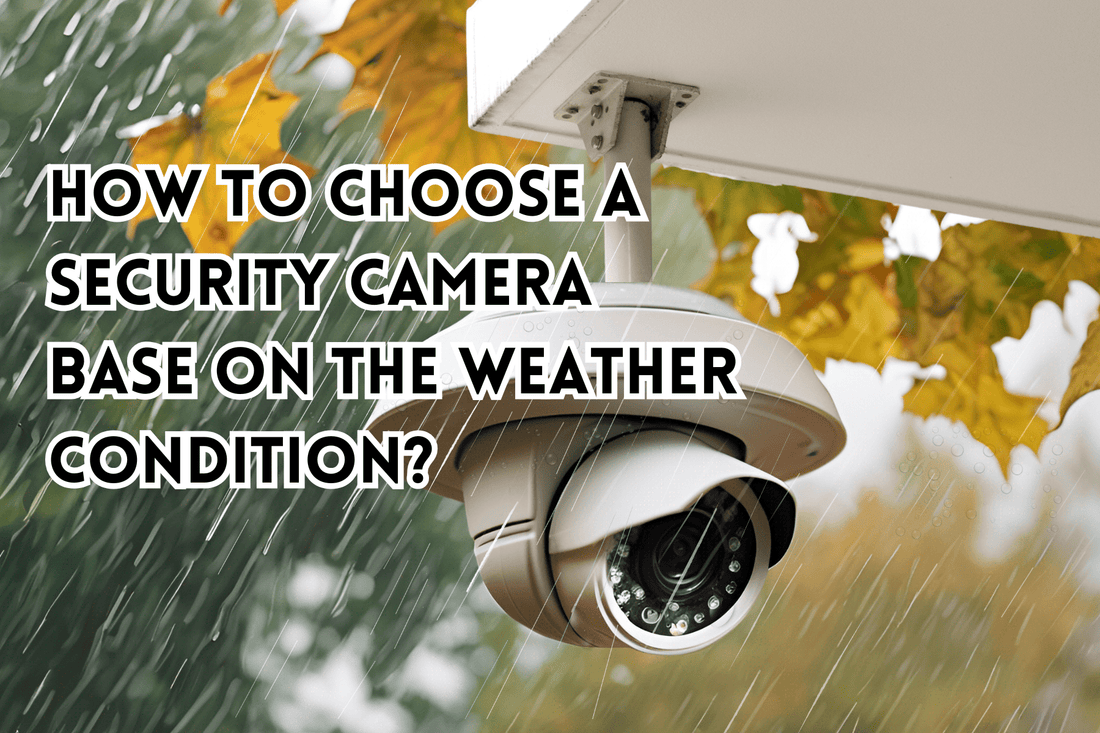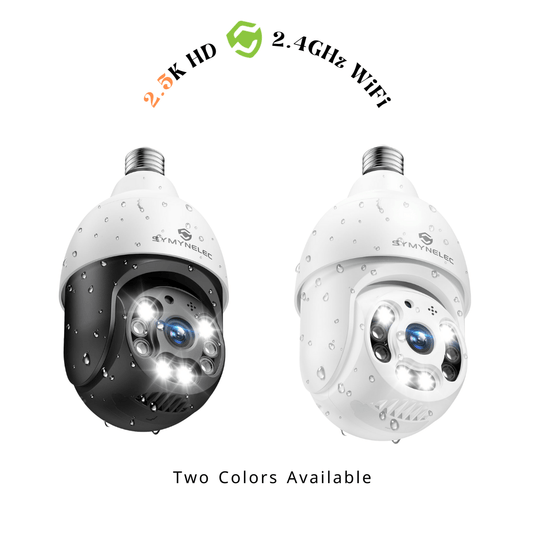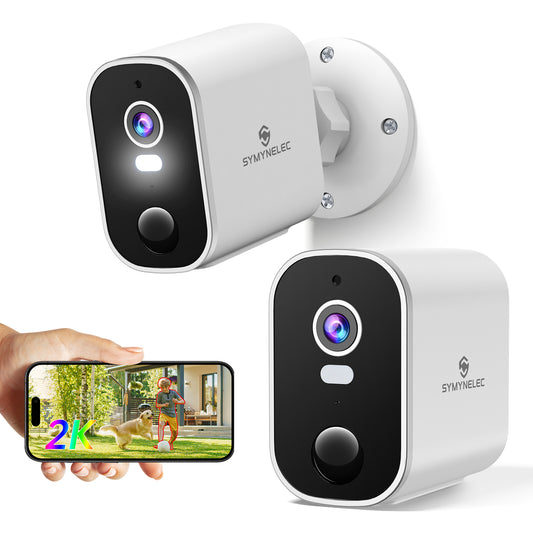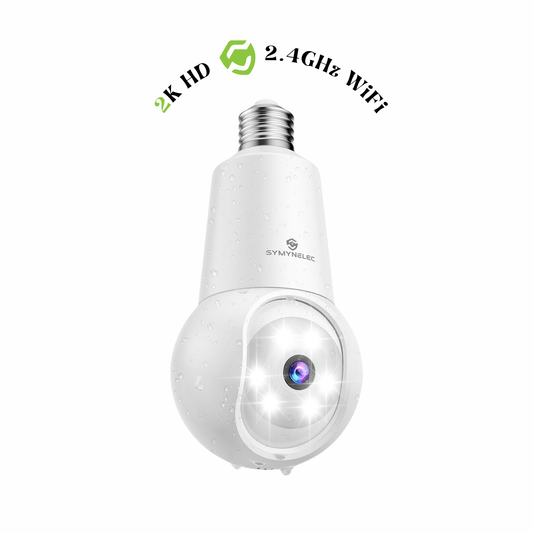Les caméras de sécurité extérieures doivent résister à une large gamme de conditions météorologiques pour offrir des performances ininterrompues. Que vous viviez dans une région pluvieuse, que vous subissiez des hivers rigoureux ou que vous soyez confronté à une chaleur extrême, une bonne caméra de sécurité doit être conçue pour gérer efficacement les éléments. Voici les principales raisons pour lesquelles les caméras extérieures de haute qualité excellent dans les scénarios du monde réel
1. Conception résistante aux intempéries (IP65 ou supérieur)
-
Scénario : Dans des endroits comme Seattle, la pluie est fréquente et les appareils exposés aux éléments peuvent rapidement se dégrader s'ils ne sont pas correctement protégés. Une caméra extérieure de haute qualité avec un indice IP65 ou IP67 garantit que la pluie, la poussière et l'humidité ne perturberont pas son fonctionnement. Ce niveau de protection permet aux propriétaires de surveiller l'activité en continu, même pendant les longues périodes de pluie. Certaines caméras avec des indices IP plus élevés sont même résistantes aux jets d'eau et à l'immersion temporaire, offrant ainsi une tranquillité d'esprit supplémentaire.
-
Conseil aux acheteurs : lorsque vous achetez des caméras, recherchez toujours des indices de protection IP qui reflètent le climat de votre région. L'indice IP65 convient à la plupart des environnements, mais si vous subissez de fortes pluies ou des tempêtes de neige, un modèle classé IP67 est préférable.
2. Résistance à la température pour les climats chauds et froids
-
Scénario : Dans les régions extrêmement froides comme le Minnesota, les températures peuvent chuter à des niveaux inférieurs à zéro pendant de longues périodes. Une caméra extérieure bien conçue doit fonctionner correctement dans ces conditions sans geler ni perdre de puissance. De même, dans des régions comme l'Arizona, la chaleur intense peut provoquer une surchauffe des appareils. Une caméra extérieure haut de gamme sera dotée de composants résistants à la chaleur et pourra fonctionner sur une large plage de températures , de -4 °F à 122 °F (ou même au-delà).
-
Conseil aux acheteurs : vérifiez les températures de fonctionnement spécifiées par le fabricant pour vous assurer que la caméra est adaptée à votre environnement. Certaines caméras sont équipées de dispositifs de chauffage ou de refroidissement intégrés pour maintenir leur efficacité dans des conditions extrêmes.
3. Boîtier résistant aux UV et durable
-
Scénario : les caméras extérieures installées dans des endroits ensoleillés, comme les terrasses au bord de la piscine ou les toits, sont soumises à une exposition continue au soleil. Au fil du temps, les rayons UV peuvent provoquer la fissuration ou la décoloration des boîtiers en plastique, ce qui entraîne des problèmes de performances. Une bonne caméra extérieure sera dotée de matériaux résistants aux UV pour éviter les dommages causés par une exposition prolongée au soleil, garantissant ainsi une durabilité à long terme.
-
Conseil aux acheteurs : si votre appareil photo doit être exposé à la lumière directe du soleil pendant plusieurs heures par jour, recherchez des modèles dotés de boîtiers résistants aux UV ou de boîtiers métalliques, moins sujets à la détérioration.
4. Revêtement hydrophobe de la lentille pour des images claires
-
Scénario : En cas de fortes pluies ou dans des climats humides, les gouttes d'eau et la condensation sur l'objectif de la caméra peuvent obstruer la vue. Un revêtement hydrophobe de l'objectif permet à l'eau de perler et de s'écouler sur l'objectif, garantissant ainsi une vue claire. Cette fonctionnalité est essentielle si la caméra doit capturer des moments importants, comme l'identification de visiteurs ou le suivi des mouvements de véhicules dans votre allée.
-
Conseil pour les acheteurs : les appareils photo dotés d'une lentille hydrophobe sont particulièrement utiles dans les régions où la pluie, le brouillard ou la rosée matinale sont fréquents. Ce revêtement minimise l'entretien, ce qui permet de garder une vision claire de votre appareil photo sans nettoyage constant.
5. Système de montage résistant au vent pour plus de stabilité
-
Scénario : Dans les régions côtières comme la Floride ou les zones sujettes aux ouragans, les vents violents peuvent faire trembler ou vibrer les caméras standard, ce qui entraîne des images floues. Une caméra extérieure bien conçue sera livrée avec des supports de montage renforcés pour empêcher tout mouvement pendant les tempêtes. Cette stabilité garantit que la vidéo reste fluide et utilisable, même dans des conditions météorologiques extrêmes.
-
Conseil pour les acheteurs : si vous vivez dans une région venteuse, choisissez des caméras avec des systèmes de montage stables et vérifiez les fonctionnalités telles que la technologie anti-tremblement pour garantir des images fiables lors de fortes rafales.
6. Fonctionnalités supplémentaires pour les changements saisonniers
-
Scénario : certaines régions connaissent des changements saisonniers extrêmes, comme de fortes chutes de neige en hiver et une chaleur intense en été. Les caméras d'extérieur haut de gamme peuvent inclure une adaptabilité saisonnière , comme un chauffage automatique de l'objectif pour éviter l'accumulation de givre ou des systèmes de refroidissement pour les mois d'été. Ces fonctionnalités garantissent que votre caméra peut s'adapter aux conditions changeantes sans perdre en efficacité tout au long de l'année.
-
Conseil aux acheteurs : recherchez des caméras avec des fonctions de chauffage ou de refroidissement intégrées si votre région connaît des changements de température drastiques entre les saisons.
Pourquoi choisir Symynelec pour vos besoins en caméras extérieures ?
Les caméras extérieures de Symynelec sont conçues pour répondre à toutes ces exigences. Nos produits sont dotés d'une résistance aux intempéries IP65, d'une large plage de températures de fonctionnement, de matériaux résistants aux UV, de lentilles hydrophobes et de systèmes de montage résistants au vent , garantissant des performances fiables dans tous les climats. Avec Symynelec, vous pouvez protéger votre propriété toute l'année, sachant que votre caméra fonctionnera quelles que soient les conditions météorologiques.





